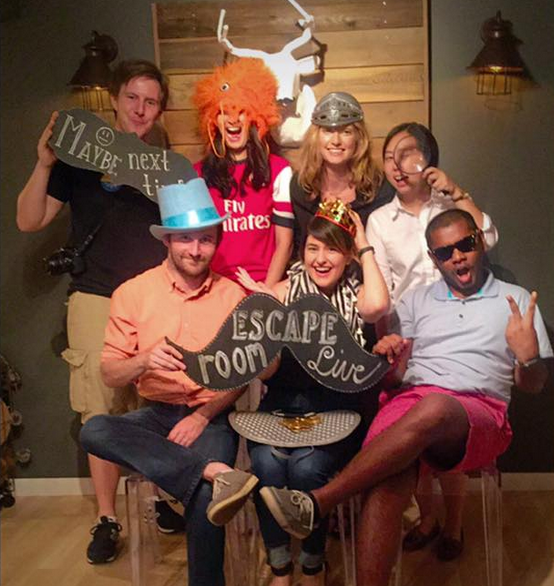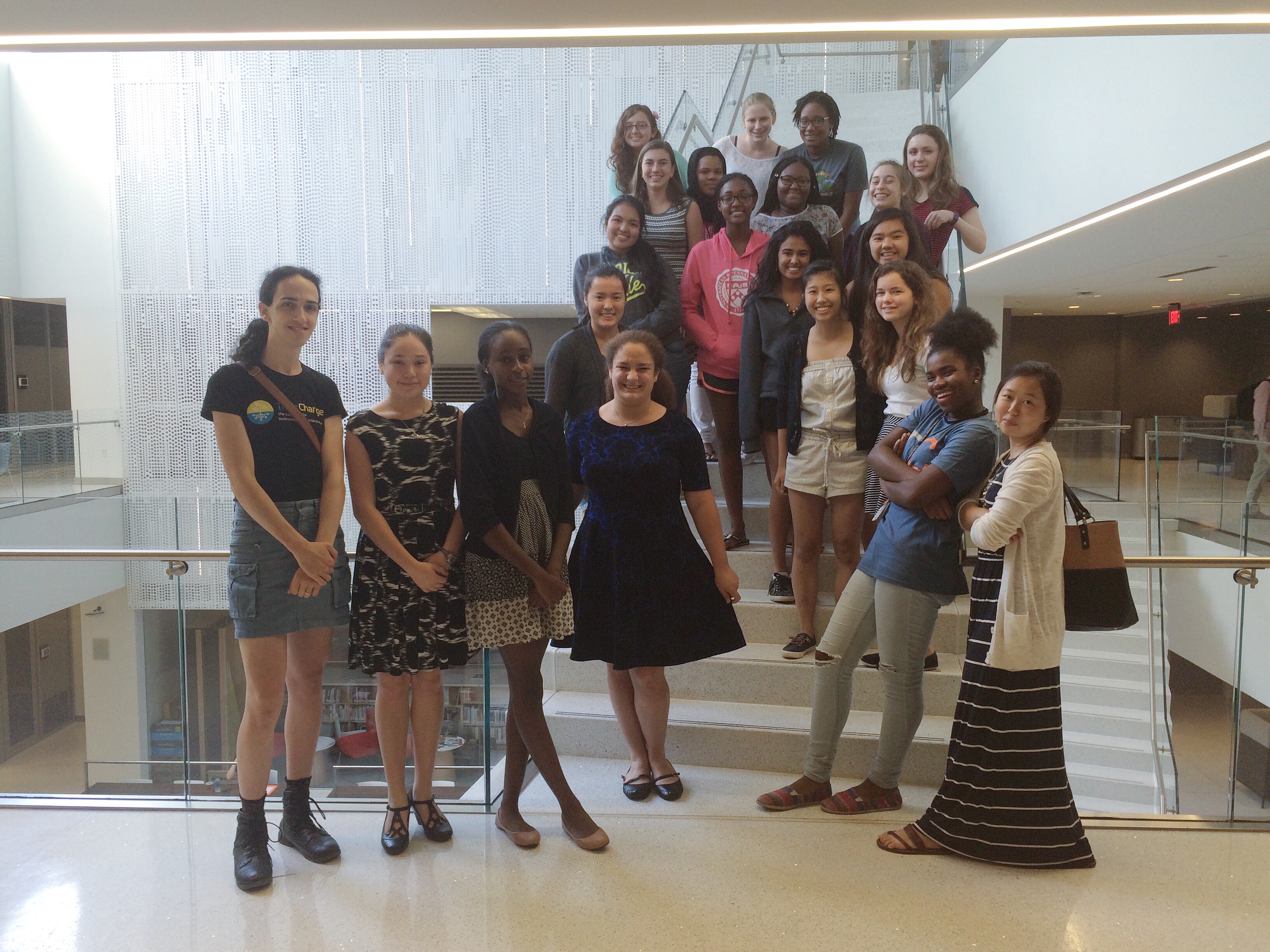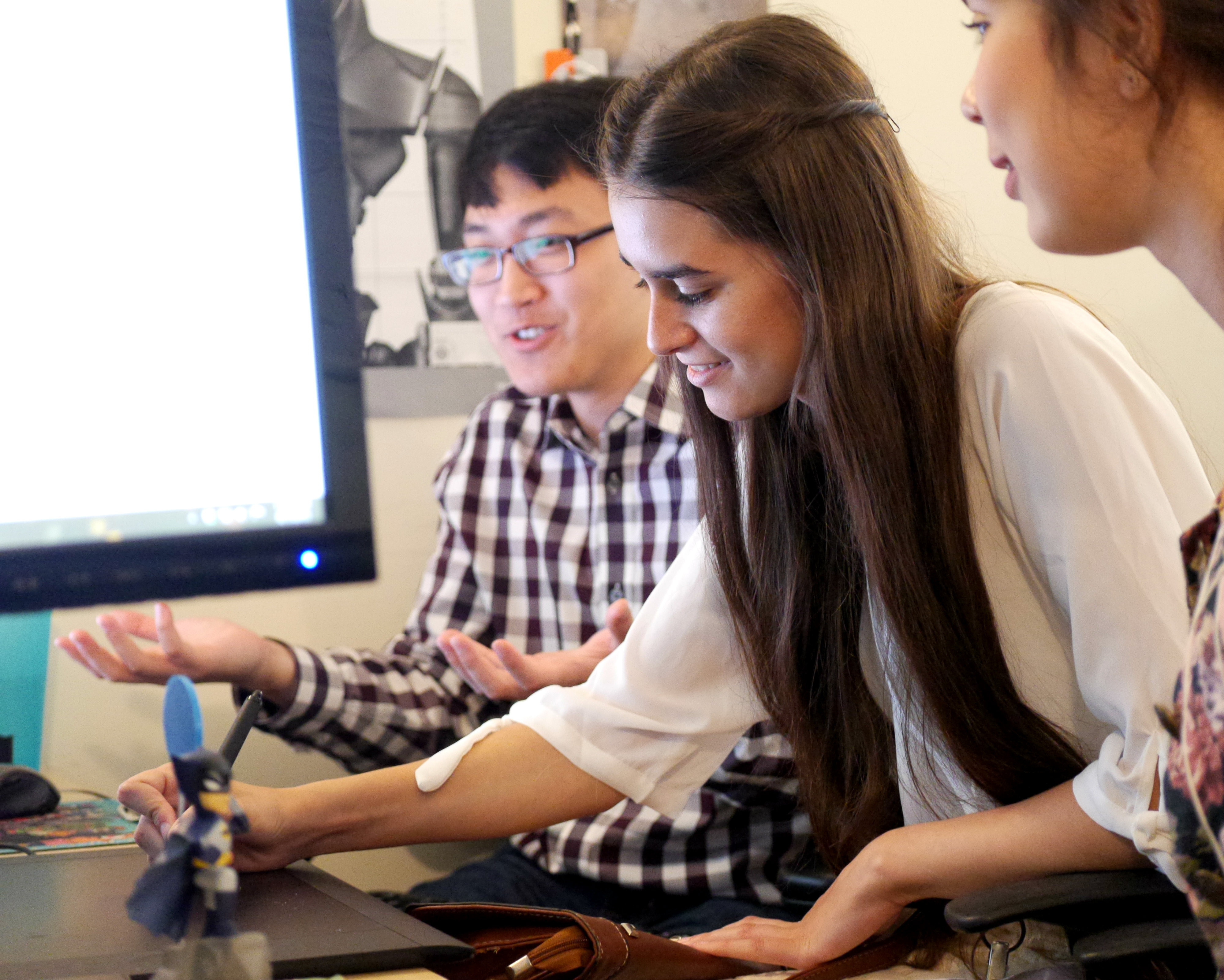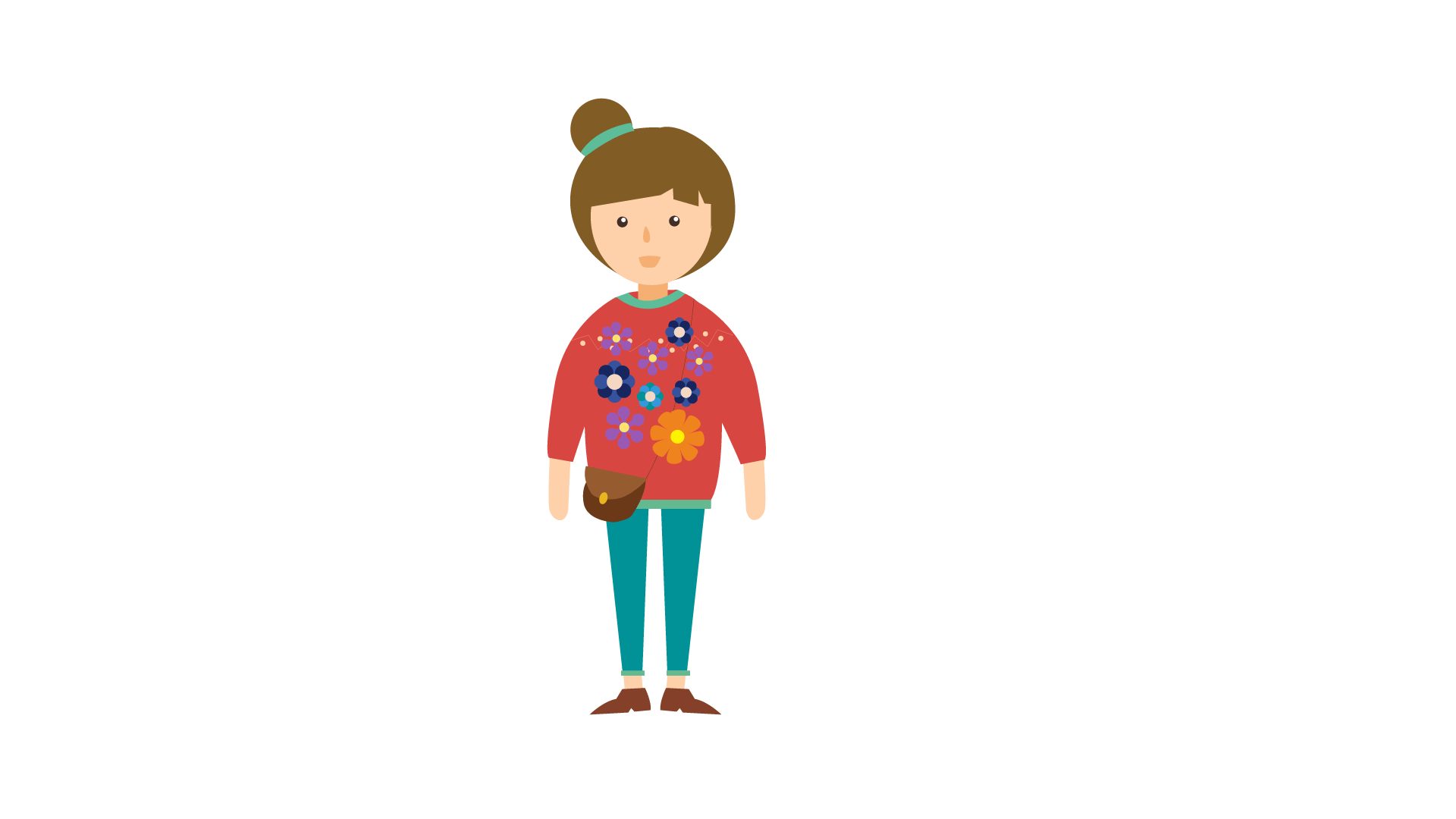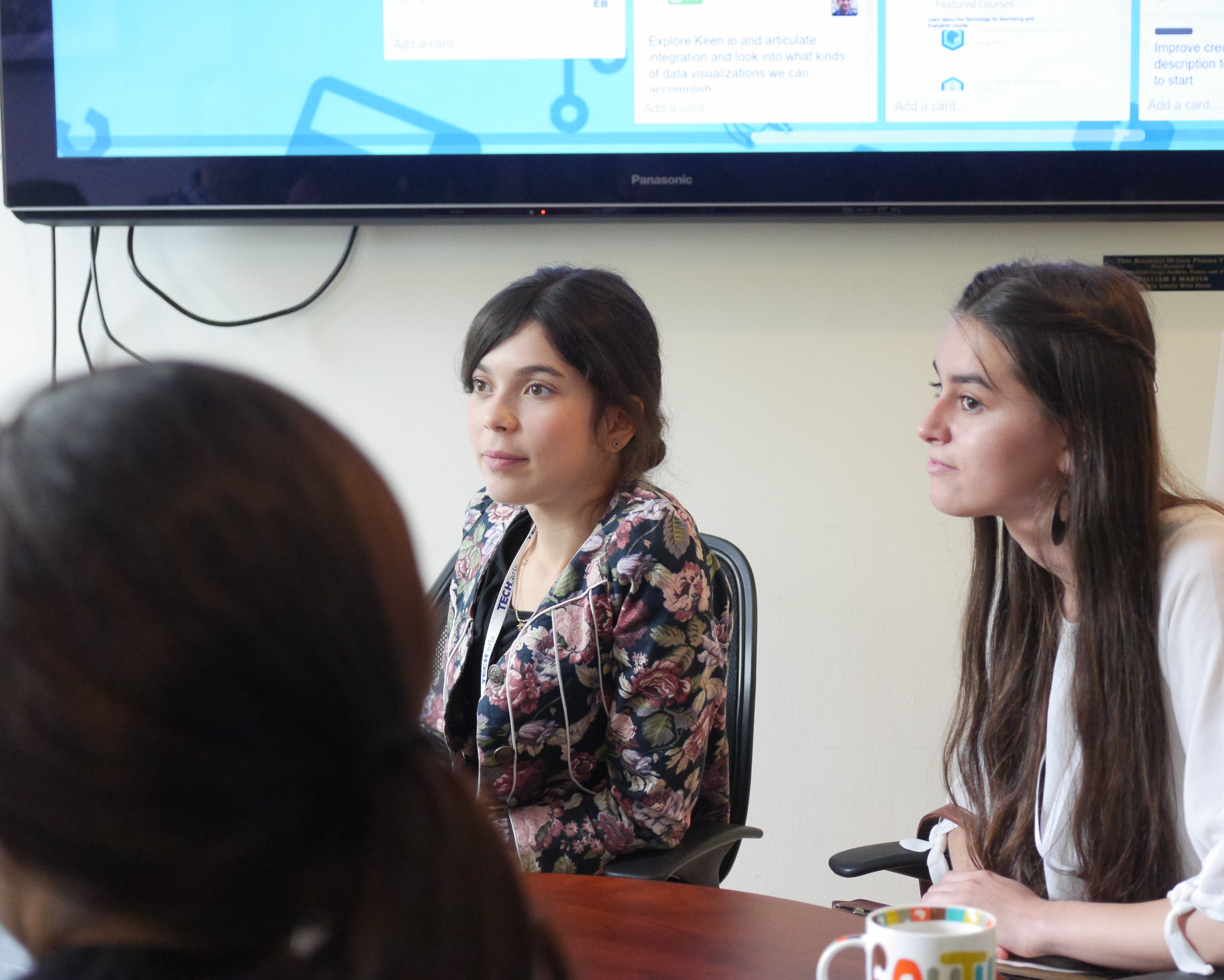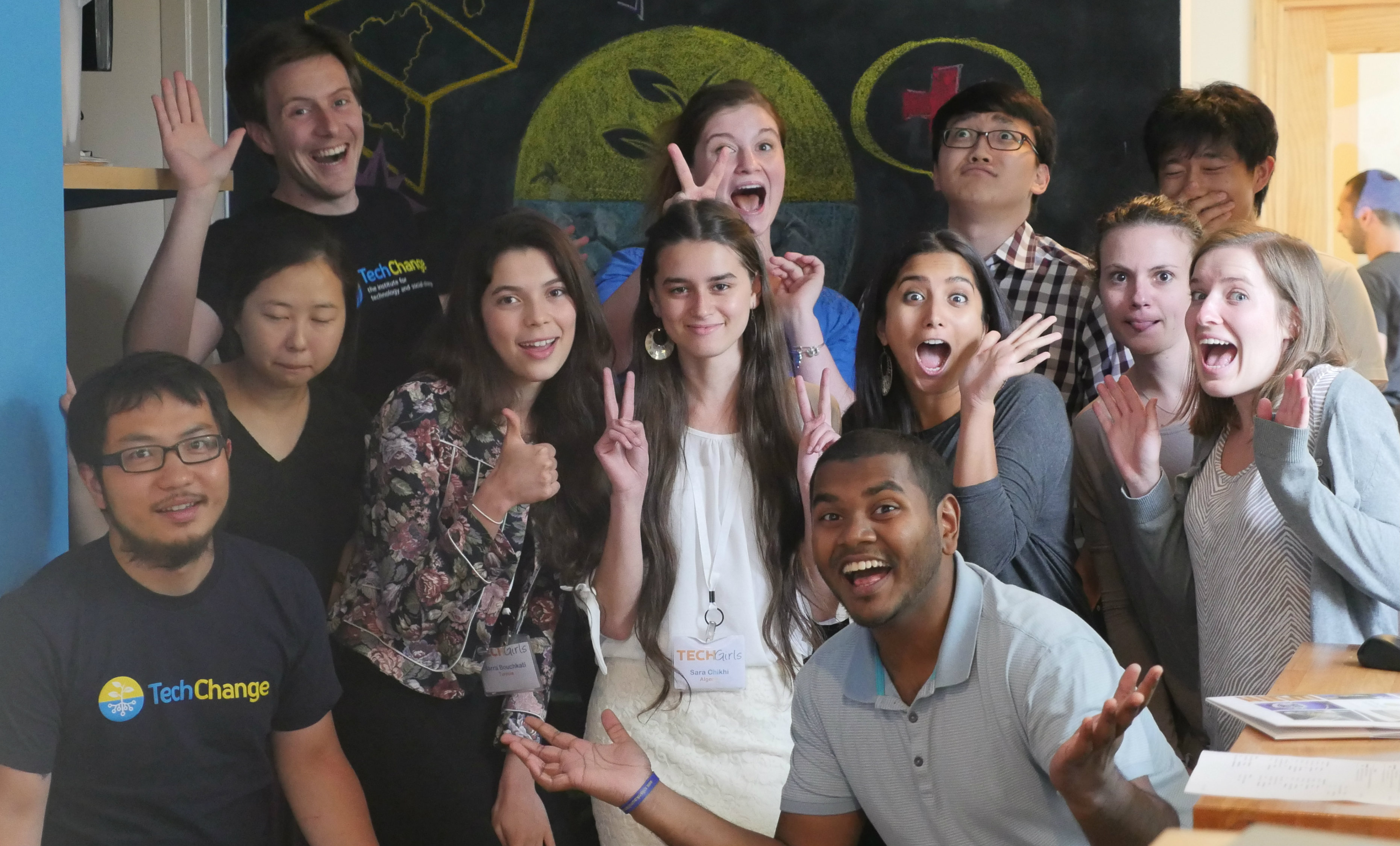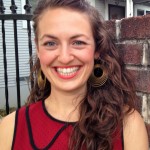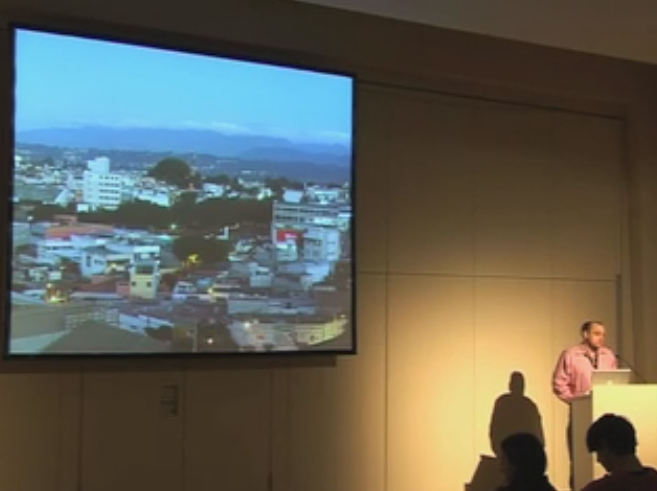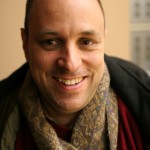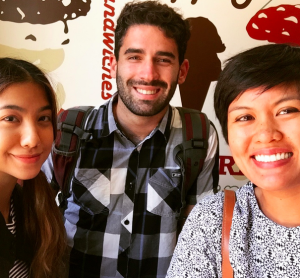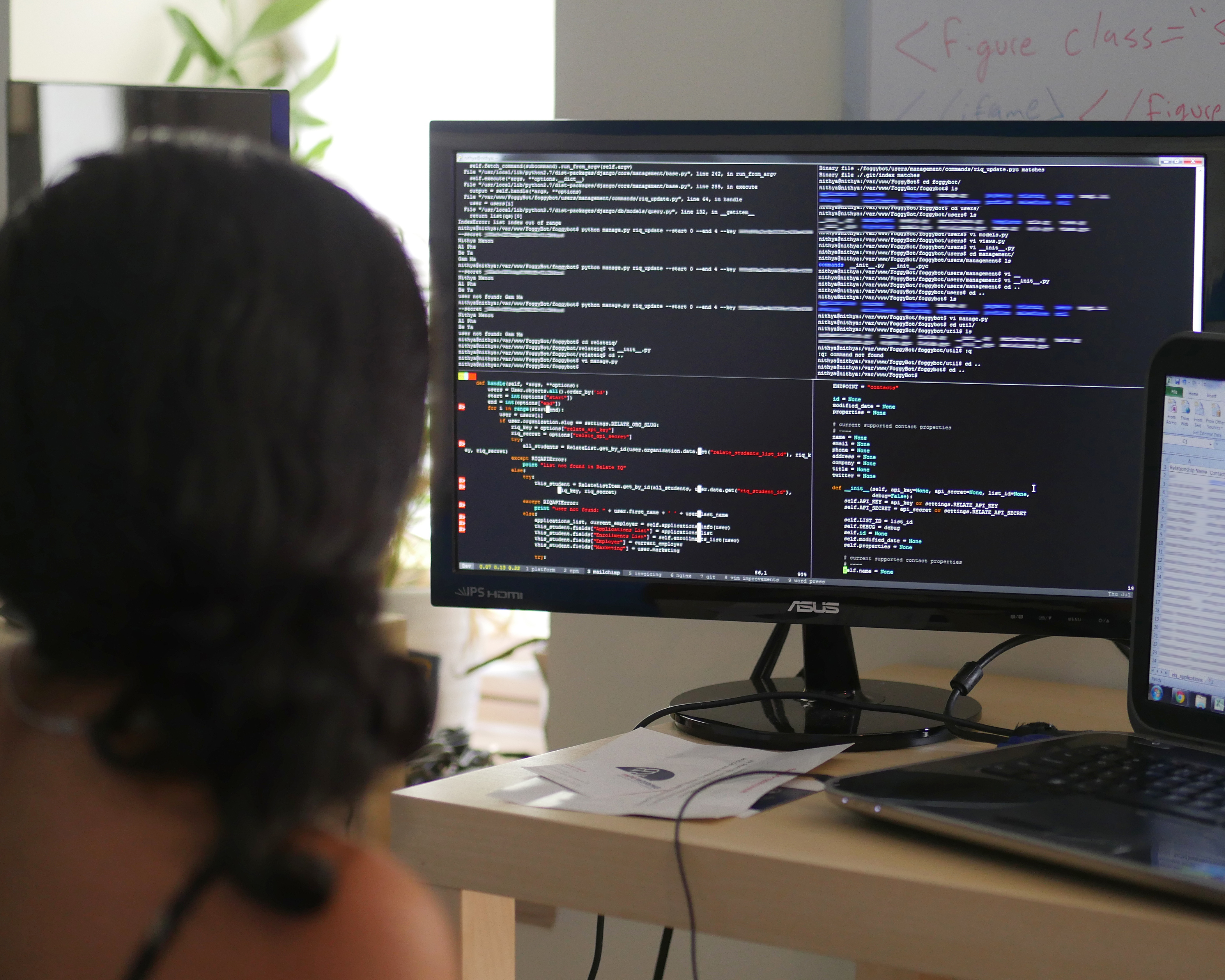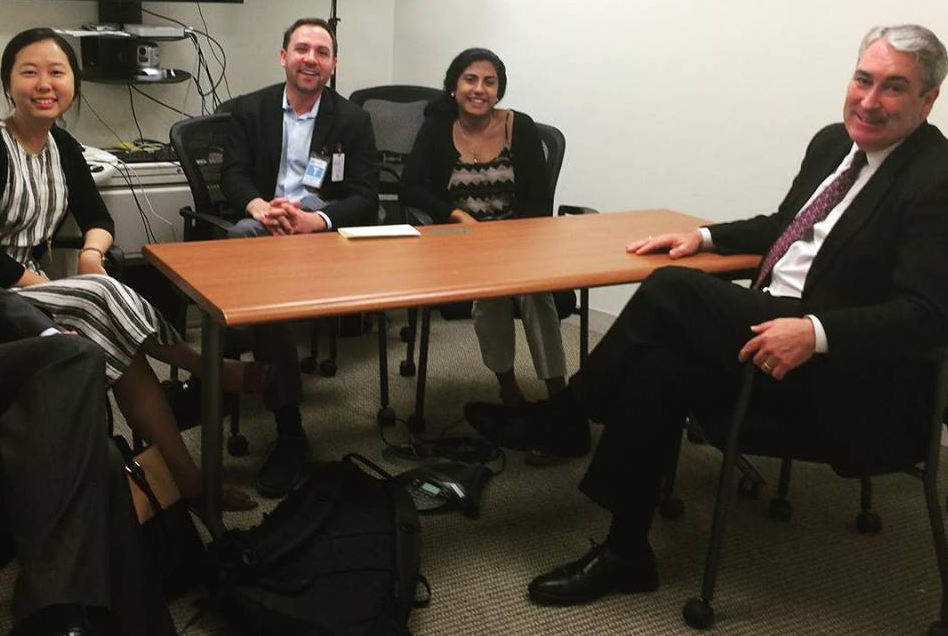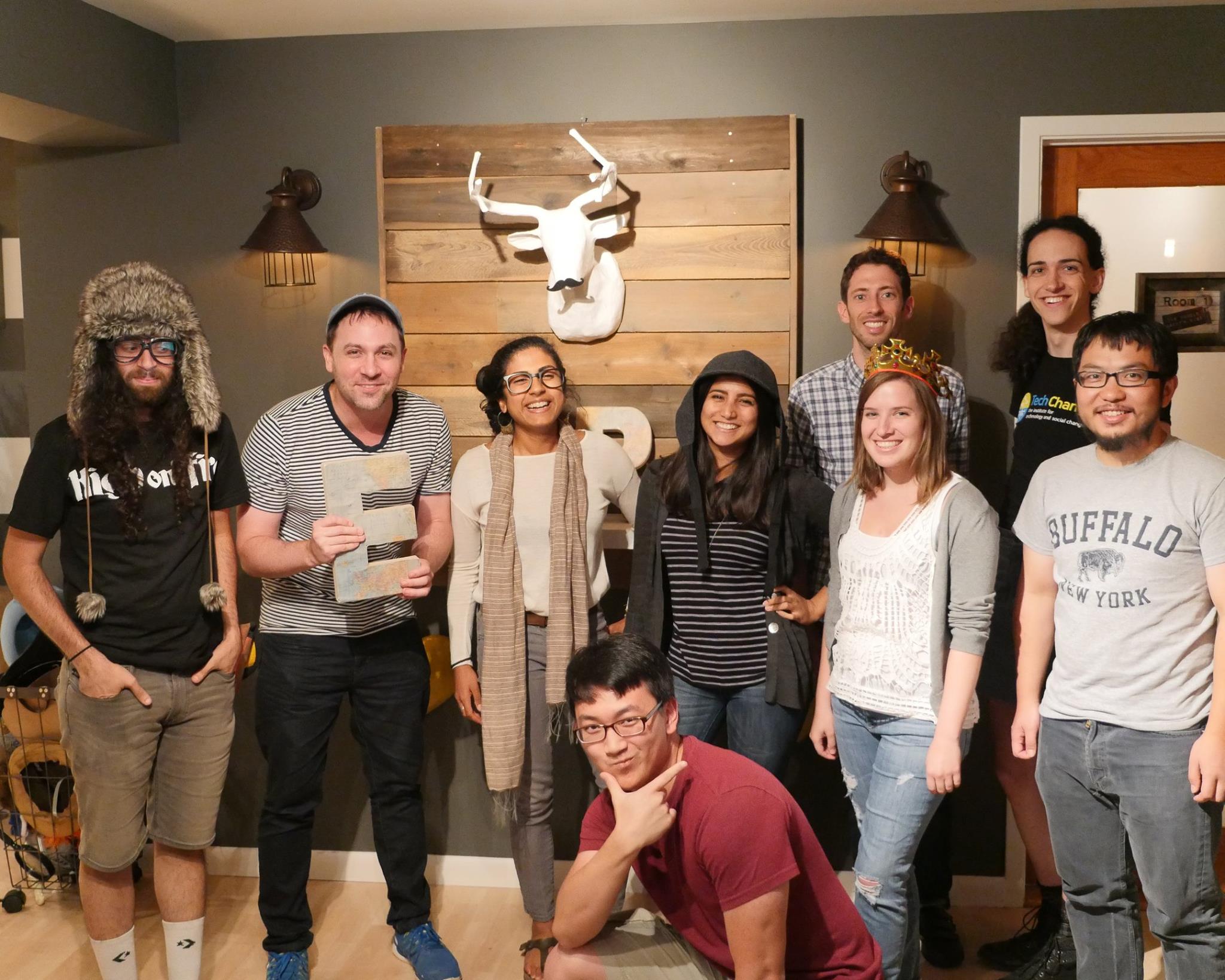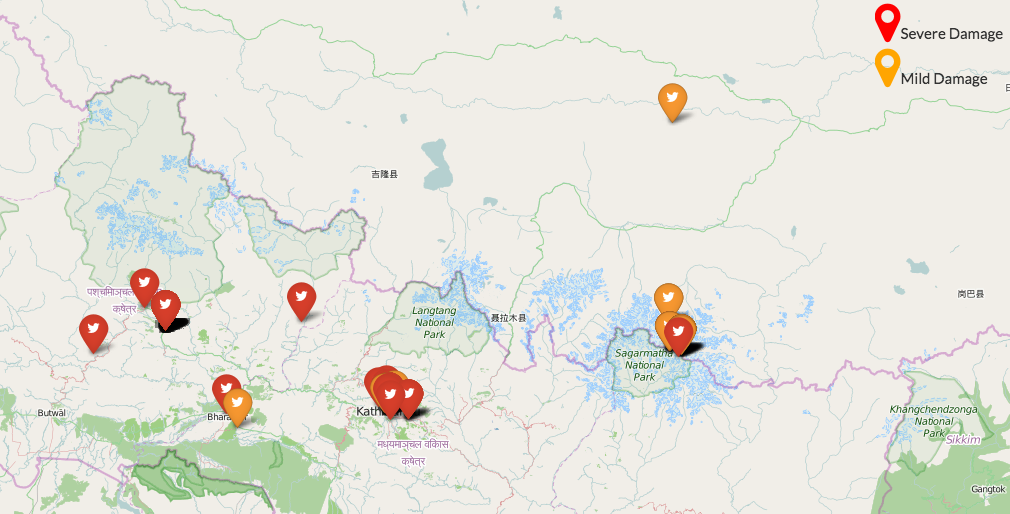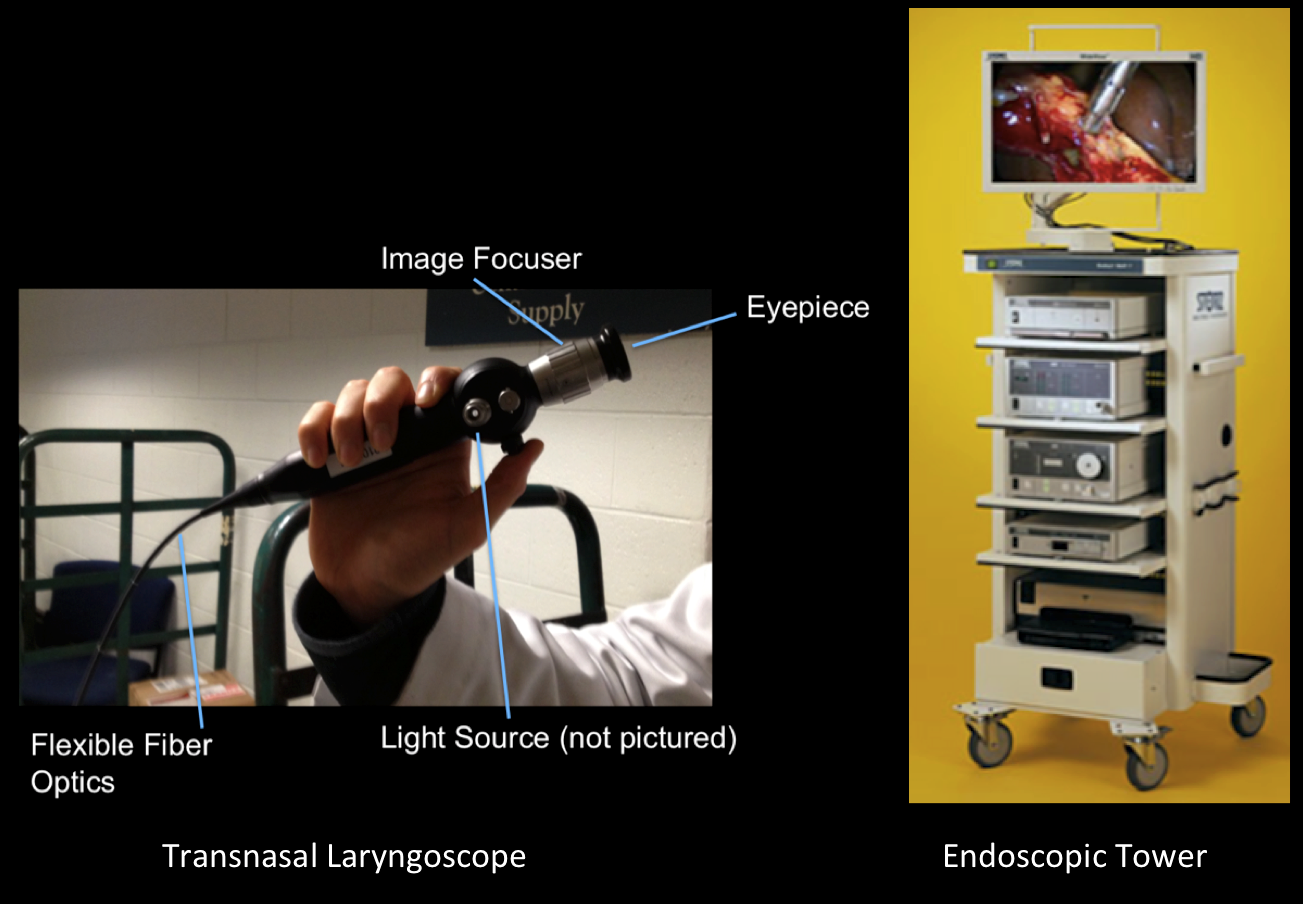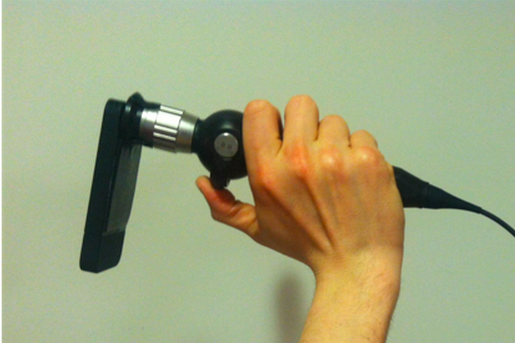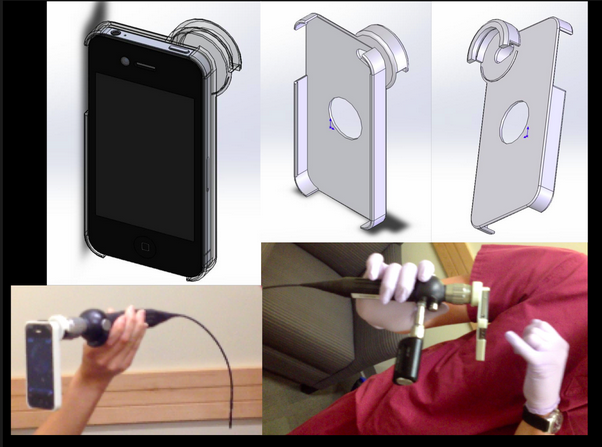Summer is coming to an end in D.C., and so is our time with our Summer Tech Fellows at TechChange. We kicked off our first TechChange Summer Fellowship this year and had three amazing fellows join us at our headquarters. Before You Jin wraps up her fellowship, we asked her about her time at TechChange!
How did you hear about TechChange?
I first heard about TechChange when the Founder, Nick Martin spoke at a panel about social change at my university. It was equally mind-boggling and motivating to hear that it was actually possible to pursue a career that aligns my passions in design, education technology, and social work!
Fast forward four years later, I’m still a huge fan of TechChange and an alumni of two courses: Mobiles in International Development & Technology for Data Visualization, and now also a TechChange Fellow!
Tell us a little bit about yourself
I’m a User Experience (UX) designer who studied Sociology and International Development & Conflict Management at the University of Maryland College Park. I’ve always been interested in finding ways that design can improve lives. After joining my high school’s IT program, I pursued web design because, at the time, I was convinced that tech and social good meant designing websites for charitable organizations.
However, I was happy to realize that my perspective was quite limited. From education technology, mHealth, ICT4D to human-centered design, the role of tech in social good means so much more today.
Outside of work, I love to take pictures, play board games with family and jam with friends. If I could, I would go on a food tour in Asia and a photo expedition to all of the National Parks. I also spend my free time serving as a teacher for my church’s youth group and as a designer for Girls in Tech DC.
Where were you when you found out you were accepted into the fellowship?
I remember sitting on my couch, casually checking my email before heading to bed. When I saw the acceptance email – I couldn’t believe it! Of course, after reading it over and over again, I immediately shared the news with my family and close friends because they knew how much the fellowship meant to me.
Why did you choose TechChange to spend your summer?
TechChange is a place for “geeks for social good” and to me, becoming a fellow “geek” had never sounded so appealing. I love how TechChange connects a diverse range of development partners and professionals around the world through education, whether it’s through their diploma program in Monitoring and Evaluation or animation about USAID’s Mobile Solutions. After following TechChange’s work closely for several years, the thought of finally being able to work behind the scenes for TechChange was really exciting for me!
This opportunity was also a great way to dedicate my summer to diving into front-end development. Before the fellowship, I had been working with different startups and developed the desire to better communicate with other engineers and to contribute in fixing bugs.
What did you do at TechChange this summer? What was your role at TechChange?
The main project I worked on was building a living style guide web application to assist in rapid page development and brand consistency.
While I had created a style guide before, I was challenged to reevaluate my understanding of style guide driven development and maintainability. I paired a style guide generator (Fabricator) with a CSS documentation parser (DSS) to auto-generate pages from the outputted JSON data which lists each component’s attributes and markup. This way, whenever a developer makes changes to the codebase, the style guide would reflect those changes automatically upon compilation.
Another key part of the project was also spent auditing all of the existing CSS markup and reorganizing the user interface patterns to create a standardized taxonomy and customized theme repository. Eventually, this repository will unify and standardize styling across the main website, course platform, and admin platform which is truly exciting! The next project I’m excited to work on is redesigning the syllabus page to centralize the course platform.
What did you learn during your time at TechChange?
From breakout lunches about pedagogy and the Sustainable Development Goals, to listening in on live events with guest experts, you’re bound to learn a lot by just being inside the office.
Here are a few things I will take away from the fellowship:
- Experiencing how writing clean and reusable code greatly contributes to its maintainability in a team environment. Implementing best practices in CSS Semantics, Javascript syntax and setting up a modular design system.
- Overcoming my fear of the terminal! Over time, I preferred using command line tools like vim, tmux and bash scripts.
- The value of automation and using Node.js tools such as npm and gulp to run tasks
- Configuring Nginx to serve static files and set up an authentication scheme
- WordPress templating (PHP) and migrating the database using Sequel Pro
- Following Gitflow best practices including managing subtrees
What has been your favorite moment at TechChange this summer?
It’s hard to pinpoint one favorite moment! I can, however, recall the most regretful moment: running out of time at Escape Room Live when my team was solving the very last puzzle.
On a more serious note, I am truly thankful for the wonderful people I met along the way. Inside the office, I was constantly inspired by the humility, talent, and bright attitudes of each team member, not to mention that Will Chester is the most humble CTO I will ever meet! At gatherings like the Show & Tell and platform strategy session, it was evident that each team member’s progress and input was valued. I will also miss the sillier memories like bonding over our shared love for Trader Joe’s snacks. Mochi and chocolate covered pretzels to the team are what lush plants are to locusts.
Outside of the office, I felt fortunate to personally hear stories during site visits from Craig Zelizer of PDCN, Carolyn Moore from mPowering Frontline Health Workers, and Daniel Sheerin of State Department’s eDiplomacy department. I also had a blast meeting and sharing my experiences with the talented girls of Girls Who Code DC and TechGirls.
Would you come back to work at TechChange one day? Why?
Yes, I would love to! There are many exciting projects that are always brewing and I’m excited about the direction TechChange is taking. I know that I will definitely continue taking more TechChange courses.
What advice would you give to future TechChange Fellows?
I would encourage future fellows to explore. You have the opportunity to develop your
interests and strengths or go outside of your expertise by taking on different projects and participating in different conversations going on in the office. You should also take the time to get to know the people you’re sitting next to in the office because they will truly be some of the most dedicated and interesting folks you will meet.
It was a pleasure having You Jin join us as a fellow this summer, and we are excited to announce that she will continue with TechChange, part-time! We are glad we don’t have to say bye to You Jin!
Read another Tech Fellow’s experience at TechChange here! Interested in applying for the next summer fellowship? Apply here!

